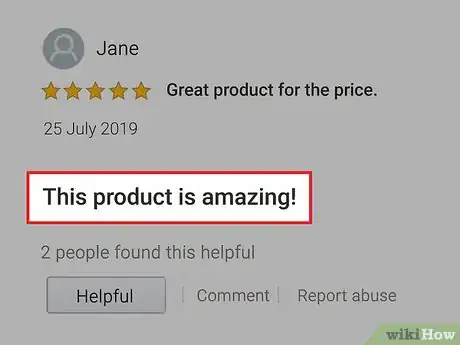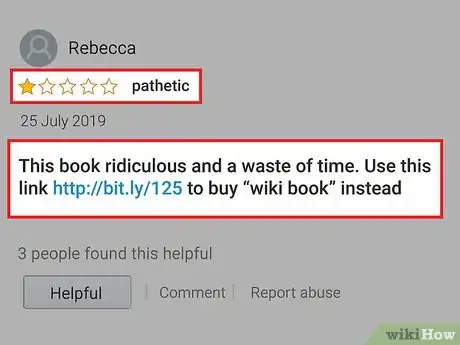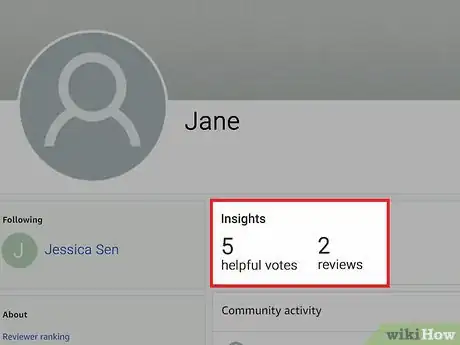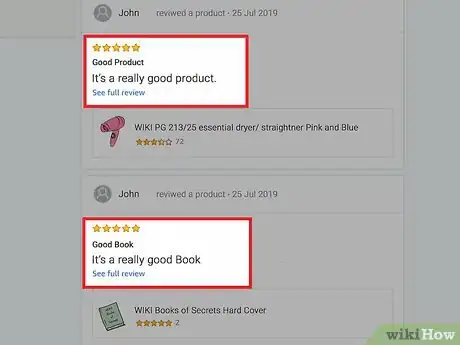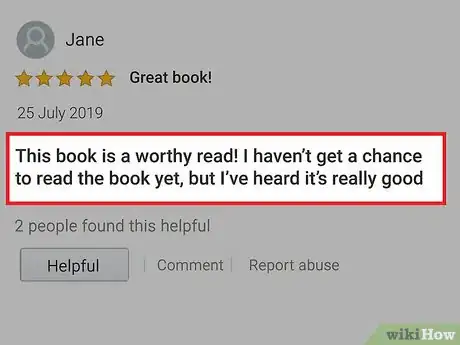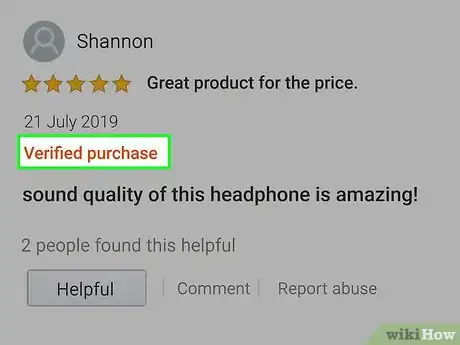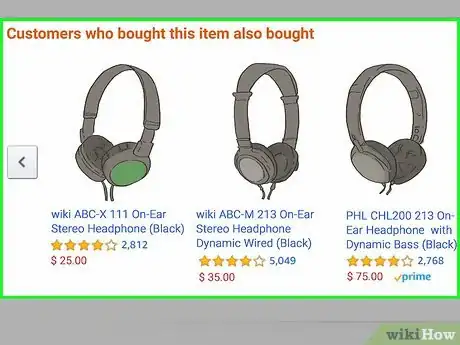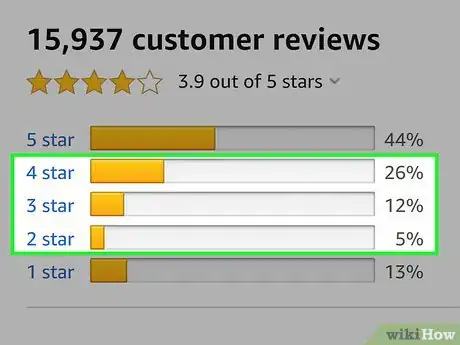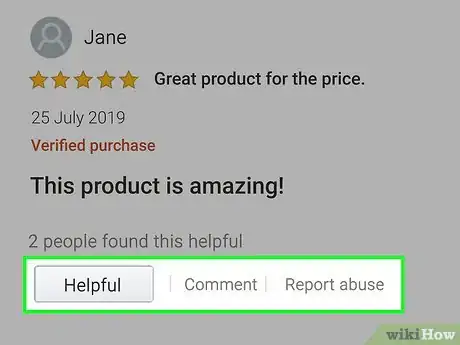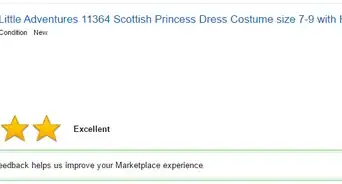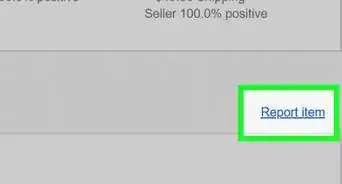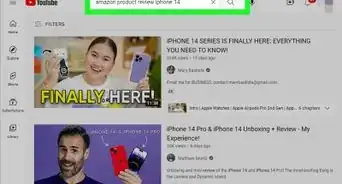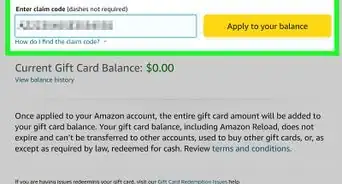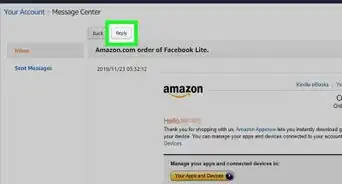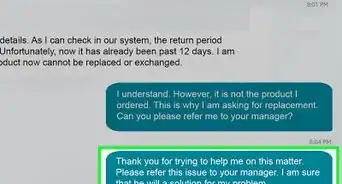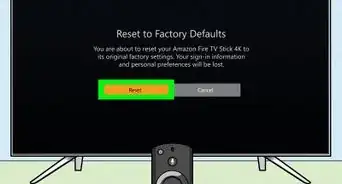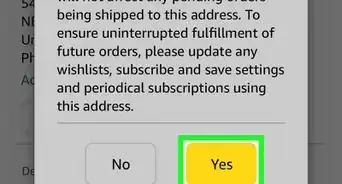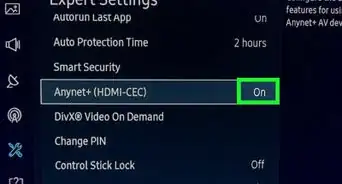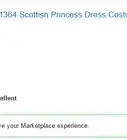wikiHow is a “wiki,” similar to Wikipedia, which means that many of our articles are co-written by multiple authors. To create this article, 43 people, some anonymous, worked to edit and improve it over time.
wikiHow marks an article as reader-approved once it receives enough positive feedback. In this case, 90% of readers who voted found the article helpful, earning it our reader-approved status.
This article has been viewed 249,936 times.
Learn more...
If you use reviews on Amazon.com to make purchasing decisions, be aware that not all reviews are unbiased. Friends, relatives, and paid reviewers may leave glowing 5-star reviews, while enemies and rivals may hope to damage the item's reputation with 1-star "put-down" reviews—all without revealing their personal association, bias, or financial incentive. How can you tell if a review has a hidden agenda?
Steps
Spotting a Fake Review
-
1Consider the length and tone of the review:
- If the review is very short, it may be a fake. If the writer just wants to affect the overall score, their main intent may be to vote via the "star" rating, and to boost or lower it. But because one must write a review as well, the review itself may be very short -- 4 or 5 lines at most.[1]
- If the review is vague and doesn't have details about the product itself, it may not be genuine. It uses generalities that could apply to many different books or products.[2]
-
2Check if the review uses emotional language. An objective review will usually summarize and critique the content or features of the product. A review with an agenda sidesteps this process.
- If the review was written for a friend, the book or item may be merely described as wonderful, great for everybody, amazing, etc., and the reviewer may say that they're planning to purchase one for everyone they know for the holidays.
- If the review is by an enemy or rival, on the other hand, the item may be called pathetic, ridiculous, or a waste of time. The reviewer may recommend an alternate product or author that "has more credibility" or that you will like better.
Advertisement -
3See whether the reviewer has written other reviews. If the person doesn't regularly write reviews, it may not be genuine. Under "see all my reviews" next to the reviewer's name, you discover that this reviewer hasn't written any other reviews -- or they've written only a few other short, gushing, vague reviews (for friends), or hit piece reviews (against rivals)[3] .
-
4Beware if the person has submitted a lot of reviews in a short period. If a book reviewer is being paid to write reviews, they may have written a great number of short, 5-star reviews for self-published or print on demand titles. Check "See all my reviews" next to that person's name to see what else they're reviewing, and to look for a sameness to the reviews.[4]
-
5Be skeptical if the review admits bias. The reviewer notes that they haven't read the book or tried the product -- so why are they reviewing it? The reviewer means to either raise or lower the star-ratings without submitting a substantive review. Sometimes a low-star review will talk about a list of ingredients, or a book theme they find distasteful, without any indication that they have ever tried that specific product or read that book.
-
6Determine if the item was a "Verified Purchase." When evaluating a review, you may also want to know if the person bought the item directly from Amazon; if they did, there will be an orange "verified purchase" notation under the reviewer's name and date. This will indicate that the reviewer has actually received the product.
-
7Consider whether the reviewer was given the product for free, in exchange for writing a review. The review must disclose if the reviewer was sent that item for free in exchange for a review, and you may not feel they can write an unbiased review in that case. But people will often write reviews for items received elsewhere -- for instance, a book may have been a gift, a library copy, or have been purchased elsewhere. Amazon allows people to review items obtained elsewhere, and to post reviews of free products; if honest, reviews in these categories are not considered "fake" reviews.
-
8Look at the "Customers Also Bought" section. Usually, this section contains products similar or complimentary to the product you're looking at. But if this section is loaded with products that have nothing to do with the product, something might be going on. For example, let's say you're looking at resistance exercise bands. You see the "Customers Also Bought" section contains items unrelated to exercise bands -- grill gloves, green tea supplements and ice cube trays. This could mean that all these product are being given away at a significant discount or for free in exchange for a review, which could bias the reviewers.
Considering and Reacting to the Reviews
-
1Disregard the highest and lowest ratings. See what people in the middle say for a more accurate assessment of the book or product.
- One-star reviews should always be suspect, especially if it's a review for a book by a controversial author.
-
2Read many reviews and apply critical thinking. Does the review sound like something a doting mother would say? Does it sound like something one's high-school enemy would say?[5]
- When reading a review, don't judge it based on whether you share the writer's opinions of the product or book; consider instead if the review is thoughtful, fair, and well-written. Even people who disagree with you may have valid points that warrant a "helpful" click.
-
3Leave feedback to help others who are reading reviews. If you decide that a review is helpful and objective, on the line at the end that reads "Was this review helpful to you?" click "Yes." This will help raise the review's credibility. If you decide that the review isn't objective or may have a hidden agenda, click "No" to lower that review's status.
Community Q&A
-
QuestionAre there websites that analyze an Amazon-listed product for review authenticity?
 JmwalaCommunity AnswerYes. There are two sites, Reviewmeta.com and Fakespot.com, that analyze reviews for any product listed on Amazon and give a rating for the user review authenticity.
JmwalaCommunity AnswerYes. There are two sites, Reviewmeta.com and Fakespot.com, that analyze reviews for any product listed on Amazon and give a rating for the user review authenticity. -
QuestionWhat if other people aren't faking and they write genuinely write in the styles suggested?
 Community AnswerIn some cases, you will be able to tell from the reviewer's manner as to authenticity and honesty. Shortness won't always make it fake, sometimes little needs to be said to make things clear. Decide within the context of what you're reading, how you personally react to what is being said, and what other forms of feedback are suggesting as well. Do some broader research to gain more information before reaching you're decision if you're unsure.
Community AnswerIn some cases, you will be able to tell from the reviewer's manner as to authenticity and honesty. Shortness won't always make it fake, sometimes little needs to be said to make things clear. Decide within the context of what you're reading, how you personally react to what is being said, and what other forms of feedback are suggesting as well. Do some broader research to gain more information before reaching you're decision if you're unsure. -
QuestionHow can I see how many products I have reviewed on Amazon?
 Community AnswerAt the top of the page, go to "Your Account". Under "Community", select "Product Reviews Written By You". On the left it will state your ranking, number of helpful votes, and number of reviews.
Community AnswerAt the top of the page, go to "Your Account". Under "Community", select "Product Reviews Written By You". On the left it will state your ranking, number of helpful votes, and number of reviews.
Warnings
- If the five-star review profile has a dumbbell shape then the product generally is good except that there are quality control issues in the manufacturing that too frequently results in a dud.⧼thumbs_response⧽
- Lastly, if the large number of ratings are heavily or nearly exclusively one star or five stars then the product is exceedingly poor or excellent respectively.⧼thumbs_response⧽
References
- ↑ https://www.cnbc.com/2019/07/12/prime-day-tips-for-spotting-a-fake-reviews-on-amazon.html
- ↑ https://www.cnbc.com/2019/07/12/prime-day-tips-for-spotting-a-fake-reviews-on-amazon.html
- ↑ https://www.digitaltrends.com/web/how-to-spot-fake-reviews-on-amazon/
- ↑ https://www.digitaltrends.com/web/how-to-spot-fake-reviews-on-amazon/
- ↑ https://www.wsj.com/articles/is-it-really-five-stars-how-to-spot-fake-amazon-reviews-11545314400
- http://www.nytimes.com/2012/08/26/business/book-reviewers-for-hire-meet-a-demand-for-online-raves.html
About This Article
Fake reviews on Amazon are inescapable, but there are some telltale signs you can look out for to help you make better purchasing decisions. Fake reviewers are usually short and vague, and they give you almost no information on the product. If a review claims the product is amazing or terrible but doesn’t give any details, it’s possible that it’s fake. Try clicking on the reviewer's name and looking at how many reviews they've left recently. If they’ve only reviewed that product or they’ve recently left a lot of vague, short reviews, they may have been paid for it. Look for the “verified purchase” tag on reviews when forming an opinion about a product, which tells you that they bought it directly from Amazon. For more tips, including how to leave feedback on reviews to help other buyers, read on!
